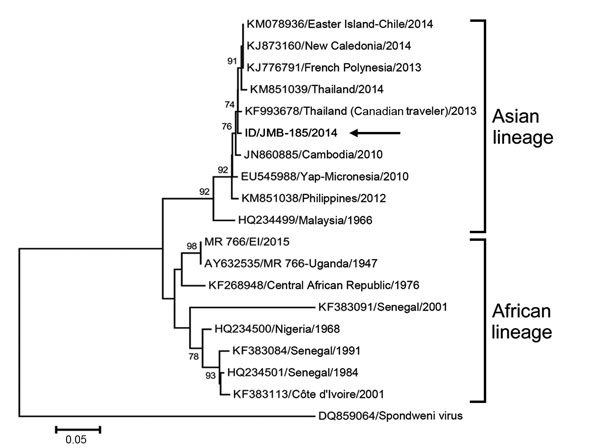Volume 22, Number 5—May 2016
Letter
Isolation of Zika Virus from Febrile Patient, Indonesia
Figure

Figure. Phylogenetic tree comparing Zika virus isolate from a patient in Indonesia (ID/JMB-185/2014; arrow) to reference strains from GenBank (accession numbers indicated). The tree was constructed from nucleic acid sequences of 530 bp from the nonstructural protein 5 region by using the minimum evolution algorithm in MEGA 6 (http://www.megasoftware.net). Numbers to the left of the nodes are bootstrap percentages (2,000 replications). Bootstrap values <70 are not shown. The tree was rooted with the Spondweni virus isolated in South Africa as the outgroup. Scale bar indicates nucleotide substitutions per site.
Page created: April 14, 2016
Page updated: April 14, 2016
Page reviewed: April 14, 2016
The conclusions, findings, and opinions expressed by authors contributing to this journal do not necessarily reflect the official position of the U.S. Department of Health and Human Services, the Public Health Service, the Centers for Disease Control and Prevention, or the authors' affiliated institutions. Use of trade names is for identification only and does not imply endorsement by any of the groups named above.